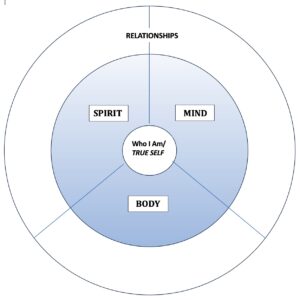Many organizations began, by the 1960s, to realize that
tight control by too few people was creating groupthink,
turnover in staff and a loss of morale among qualified
people helpless to appeal what they saw as misguided,
uninformed, or poorly thought out decisions. … The
comic strip Dilbert has become popular satirizing this
type of oblivious management, the icon for which is the
Pointy Haired Boss, a nameless and clueless social
climber. Wikipedia.org
For the past 30 years, I collaborated with small, medium and large organizations in redesigning their structures, systems and processes to fit their strategies and enable employees to serve their customers. In the 70s, we referred to this subsequent flattening of the organizational hierarchy as democratizing the workplace, which suited the social-spiritual ethos of the day. In the 80s and 90s, similar efforts were renamed as building high performing teams and workplaces. Almost two decades into the millennium, and organization designers now refer to these streamlined, democratic workplaces as adaptive enterprises. Regardless of what lessons we learned and labels we invented over the past 50 years, the purpose of an organization has never changed — to provide the necessary resources and training to front line staff so they confidently, considerately and joyfully serve clients.
Top organizations recognize that the entire purpose of the organization —
if not its only purpose — is to support the efforts of the front-line people to
do their service jobs. Jim Clemmer
The above quote from Clemmer might have you speculating who those top organizations are, and are they hiring. Most of us would love to work in an organization that paved the way for purposeful and meaningful work at the frontline. Unfortunately the traditional leadership style of command and control, where service is to the corporate master (CEO) not the customer, is alive and well in a majority of today’s S-M-L enterprises. Hence, the reason so many Millennials (Gen Y) have had it with the past and are opting for self-employment.
Furthermore, what has been successfully argued in the Enron and British Petroleum fiascos was the likelihood of entirely different outcomes, than fraud and ecological disaster, had management been more accountable to employees. So what are CEOs afraid of that keeps them repeating the same old behaviours yet hoping for different outcomes (Einstein’s definition of insanity)?
When considering what motivates human dysfunction, fear is the source. This well-known fact was once again exposed in a 2014 survey of 116 CEOs and other executives. Their top five fears and the recognized psychological and behavioural consequences (return on investments — ROI) are detailed below.
- Being seen as incompetent, familiarly called the “imposter syndrome”
ROI: defensive behaviours — arrogance, false bravado, denial
- Underachieving
ROI: overcompensating with impulsive risk taking
- Appearing too vulnerable
ROI: lack of self-awareness — low confidence, high pretense
- Being politically attacked by colleagues
ROI: lack of collaboration — mistrustful of others
- Appearing foolish
ROI: overcautious — withdrawal, dishonesty
When the surveyed leaders were asked what they felt were the consequences of their dysfunctional behaviours, they listed the most prominent as:
- lack of honesty, ownership and follow-through
- political game playing and silo management
- poor decision-making (i.e., survival rather than growth focus, failure to act unless in crisis)
- tolerance of others’ dysfunctional behaviour
- fixation on status, appearing youthful and making money (greed)
I suspect many of you reading this are saying, “Well, that’s not new information,” and you are right. Thirty years of working to bring awareness to F.E.A.R.’s (false evidence appearing real) ability to block harmony and creativity is proof of how deeply rooted it is in our human psyche. Now is the time to uproot it.
A proven approach to diminishing, if not eliminating, these dysfunctional fears and outcomes is for strategic and operational discussions to involve all levels of the organization’s workforce. In this way, the front-line expertise and knowledge necessary for adaptive enterprise design is at the planning, designing and decision making table. It is the staff at the frontline, not those at the top of an organization, who are most able to interpret and respond to the colliding multi-trends of the iVUCA environment currently confronting us.
Alas, for collaboration to be encouraged in an organization, the CEO and executives must be emotionally intelligent; that is, they must understand and know how to build harmony and creativity. Can you see the conundrum? If an executive is hired for their financial and business intelligence, it does not equate that they are emotionally intelligent. Fortunately, our iVUCA world is demanding both: intuitive, relationship (heart) and rational, logic (head) intelligences from contemporary leaders. And, since we are all leaders in our own lives, both sets of skills need to be included in our own repertoire, which is exactly what the Millennials are bent on achieving.
Which skill set do you excel in — heart or head? If you know you are out of balance, ask yourself what learning might you be missing out on.
For more on adaptive leadership, click here.





